Iguanas stand among the most visually striking reptiles in the pet trade, with their prehistoric appearance, impressive size, and seemingly contemplative demeanor. These magnificent creatures capture the imagination of many reptile enthusiasts who are drawn to their dinosaur-like features and unique personalities. However, beneath their alluring exterior lies a complex animal requiring specialized care, significant space, and a long-term commitment that can span two decades or more. Far from being a starter pet, iguanas demand experienced handlers who understand their specific needs and sometimes challenging behaviors. This article explores the fascinating world of iguanas, their natural history, care requirements, and why potential owners should think carefully before bringing one home.
The Iguana Family: More Diverse Than You Might Think
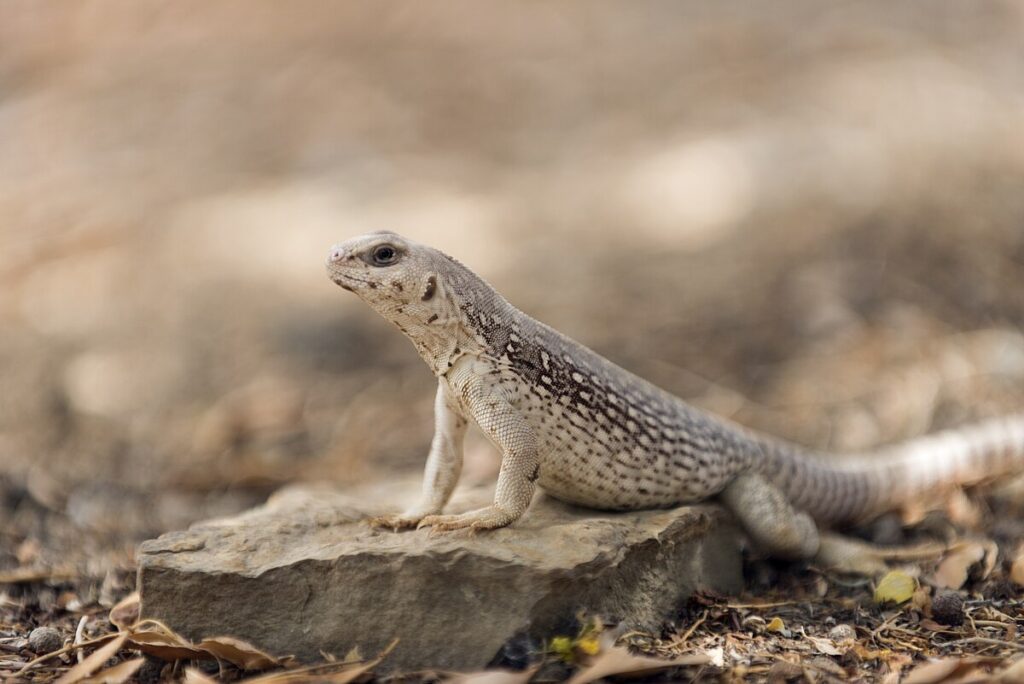
The iguana family (Iguanidae) encompasses approximately 35 species spread across the Americas, from Mexico to southern Brazil and throughout the Caribbean. While the green iguana (Iguana iguana) is most commonly kept as a pet, the family includes other fascinating species like the desert iguana, marine iguana, and the critically endangered Fiji crested iguana. Each species has evolved specialized adaptations for its ecological niche, from the marine iguana’s ability to swim and forage in the ocean to the desert iguana’s heat tolerance mechanisms. Understanding this diversity helps appreciate the specific evolutionary path that has shaped the green iguana’s biology and behavior. The family’s extensive geographical distribution has resulted in numerous subspecies with varying coloration patterns and slight morphological differences.
Green Iguanas: Masters of Size and Longevity
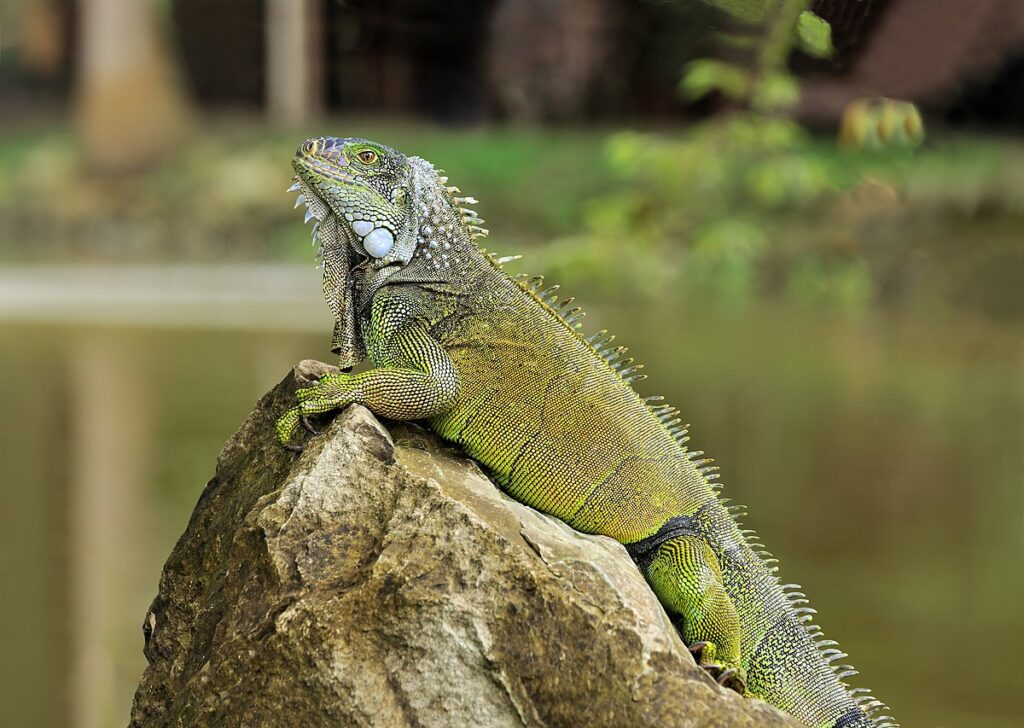
The green iguana represents one of the most substantial commitments in the reptile hobby, primarily due to its impressive size and lifespan. Males regularly grow to five or six feet in length (including their tail) and can weigh over 20 pounds when properly nourished, while females typically remain somewhat smaller. Their lifespan in captivity frequently ranges from 15 to 20 years, with some well-cared-for specimens surviving well into their late twenties. This combination of substantial size and longevity means prospective owners must plan for nearly two decades of specialized care and appropriately sized enclosures. The growth rate of juveniles can be particularly shocking to unprepared owners, as cute 8-inch hatchlings can reach two feet within their first year under optimal conditions, quickly outgrowing starter enclosures and making long-term housing arrangements a crucial consideration.
Natural Habitat: Understanding Their Ecological Niche
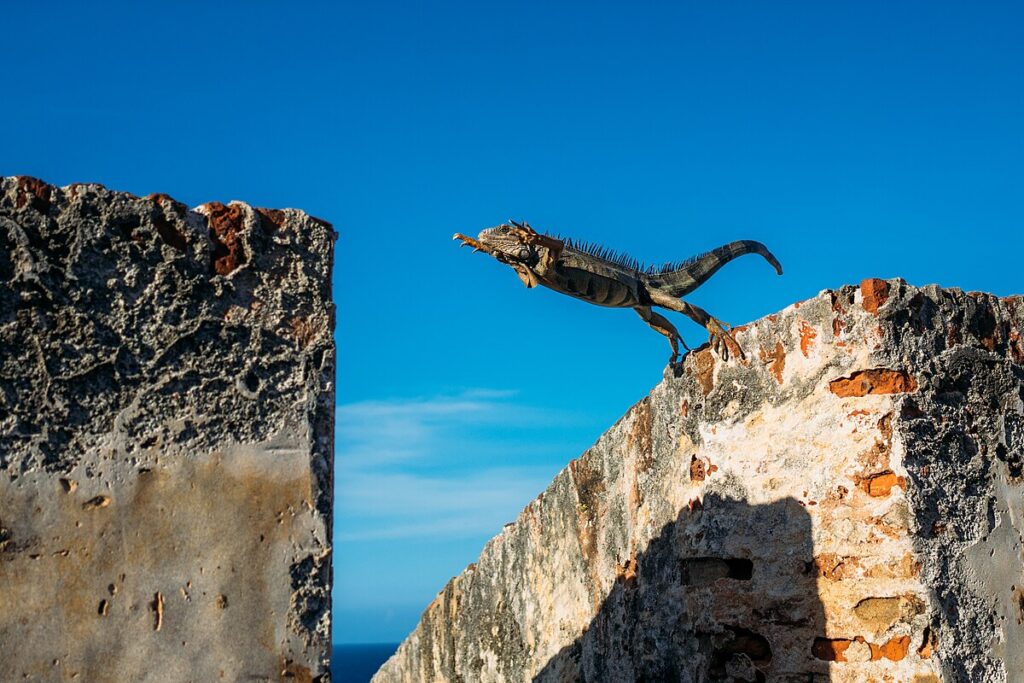
Green iguanas are primarily arboreal creatures, spending much of their time in the canopies of rainforests throughout Central and South America. They prefer to live near water sources, often settling in trees overhanging rivers, streams, or lakes, which provides them with easy escape routes from predators—iguanas will readily drop from considerable heights into water when threatened. Their natural environment is characterized by high humidity levels, typically 70-90%, and consistent tropical temperatures ranging from 80-95°F during the day. These reptiles have evolved as excellent swimmers and climbers, with powerful limbs, sharp claws, and a laterally compressed body that helps them navigate through dense foliage. Understanding these natural habitat preferences is crucial for providing appropriate captive conditions that allow iguanas to express their natural behaviors and maintain physical health.
Dietary Requirements: More Complex Than You’d Expect
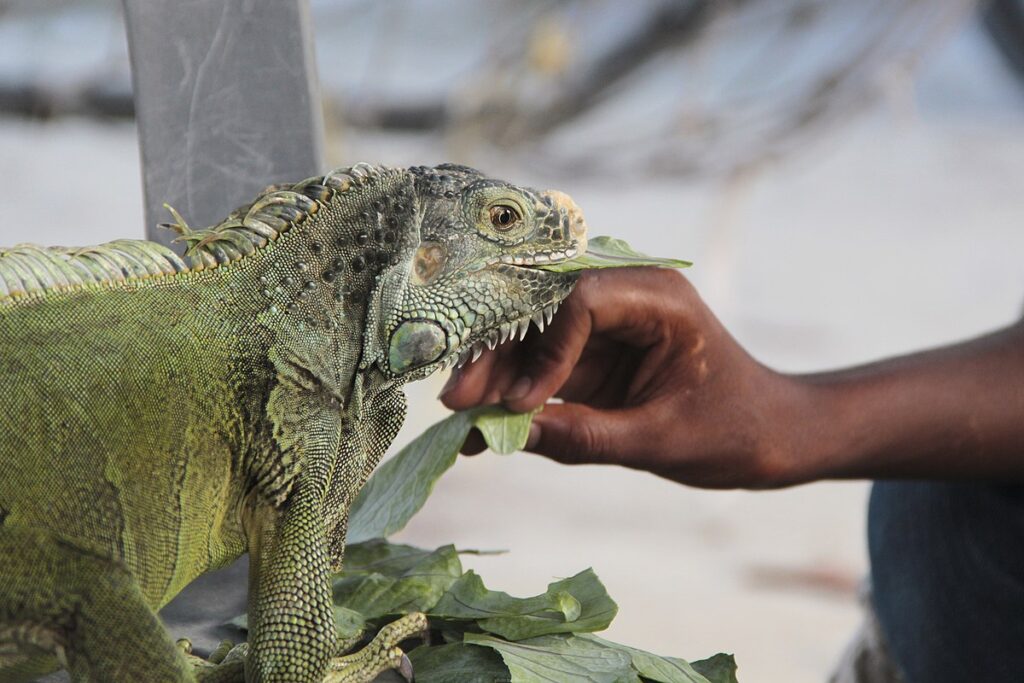
Contrary to common misconception, iguanas are strict herbivores whose diet requirements become more specialized as they mature. Juvenile iguanas need higher protein content than adults, but even their diet should consist primarily of leafy greens and vegetables. The bulk of an adult iguana’s diet should comprise dark, calcium-rich greens such as collard greens, dandelion greens, and mustard greens, supplemented with smaller amounts of other vegetables like bell peppers, squash, and green beans. Fruit should make up no more than 10% of their diet, as excessive sugar can lead to serious health issues including diabetes and dental problems. Commercial iguana foods generally don’t provide adequate nutrition on their own and should be used only as supplements to a varied fresh food diet. Proper calcium-to-phosphorus ratios are critical for preventing metabolic bone disease, a common and devastating condition in poorly nourished captive iguanas.
Housing Requirements: Think Big, Then Bigger
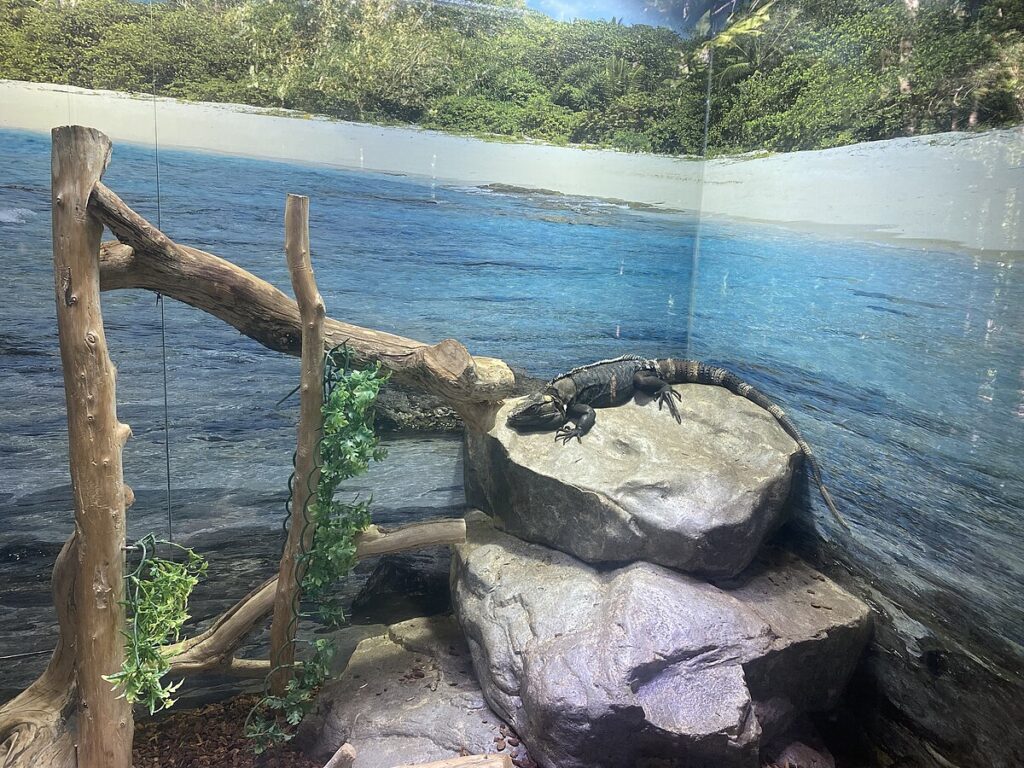
Providing adequate housing for an adult iguana represents one of the most significant challenges of ownership, requiring space commitments few potential owners initially anticipate. A full-grown iguana needs an enclosure measuring at minimum 6 feet tall, 6 feet long, and 4 feet wide—dimensions that exceed many commercially available reptile cages and often necessitate custom-built solutions. The vertical dimension is particularly important as iguanas are arboreal creatures that need climbing opportunities to express natural behaviors and maintain muscle tone. Within this spacious enclosure, owners must create a complex environment featuring multiple sturdy branches, platforms at various heights, appropriate substrate, and both basking and hiding areas. Temperature gradients must be carefully maintained, with basking spots reaching 95-100°F while the cooler end remains around 80-85°F, all while maintaining appropriate humidity levels—requirements that often necessitate sophisticated environmental control systems.
UV Lighting: A Non-Negotiable Requirement
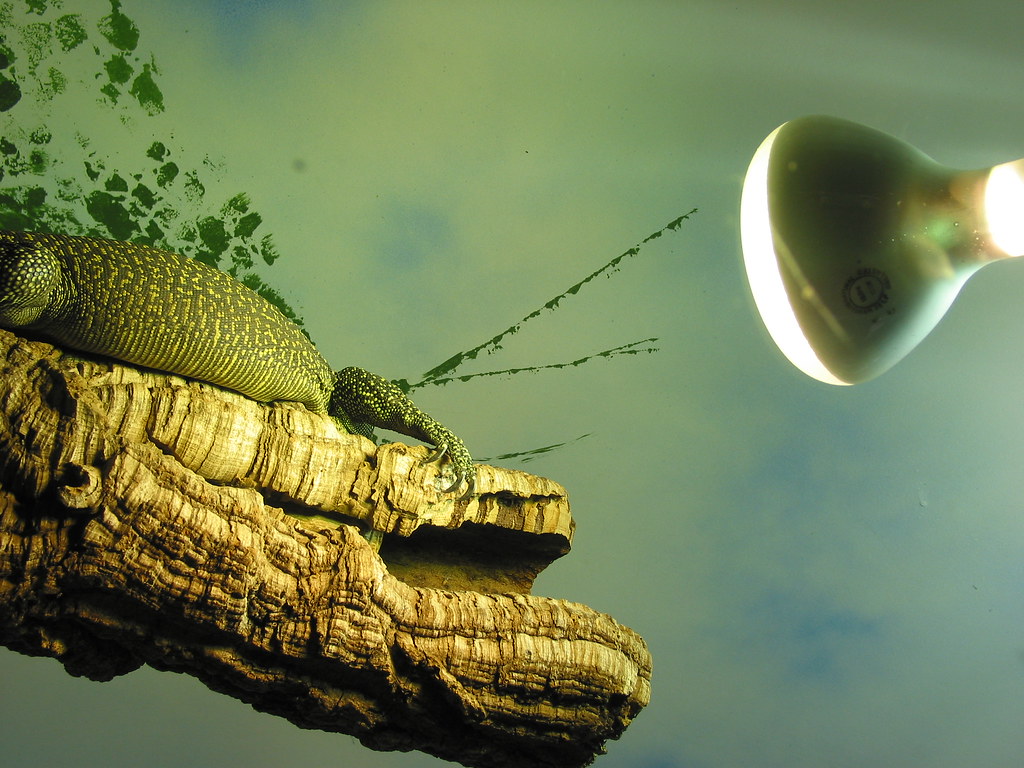
High-quality UVB lighting stands as perhaps the single most critical element of captive iguana care after appropriate diet. Iguanas require UVB radiation to synthesize vitamin D3, which enables proper calcium metabolism and prevents metabolic bone disease—a painful, debilitating, and often fatal condition characterized by softening bones, muscle weakness, and deformities. Not just any UV light will suffice; iguanas need specialized reptile UVB bulbs with appropriate wavelength outputs and intensity, typically measuring 10.0 or higher on the UVB scale. These specialized bulbs must be replaced every six to twelve months even if they continue to emit visible light, as their UVB output diminishes over time. Natural sunlight (unfiltered through glass or plastic, which blocks UVB) provides the ideal source of UV radiation, making safe outdoor enclosures a valuable addition to an iguana setup when climate permits.
Temperament and Handling: A Test of Patience
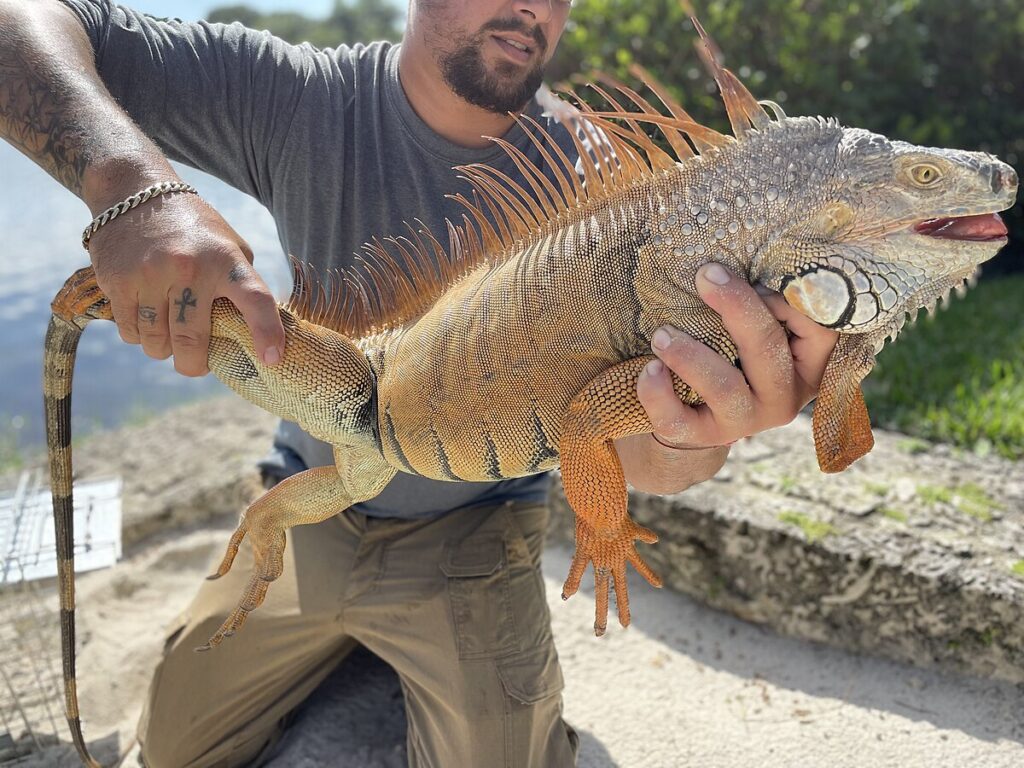
The temperament of iguanas varies significantly between individuals and often changes dramatically as they mature, with many becoming more territorial and aggressive upon reaching sexual maturity around 18-24 months of age. Males typically display more aggressive tendencies, especially during breeding season when hormone levels peak, sometimes becoming dangerously hostile toward their owners. Early and consistent handling can help socialize iguanas, but even well-socialized individuals may become temperamental without warning. Their defensive arsenal includes a powerful whip-like tail capable of inflicting serious welts or even breaking skin, sharp claws that can cause deep scratches, and a bite force sufficient to sever fingers—making protective gear like thick gloves and long sleeves advisable when handling less predictable specimens. Despite these challenges, some iguanas do bond with their caretakers and can become surprisingly interactive pets with sufficient patience and appropriate handling techniques.
Health Concerns: Common Medical Issues
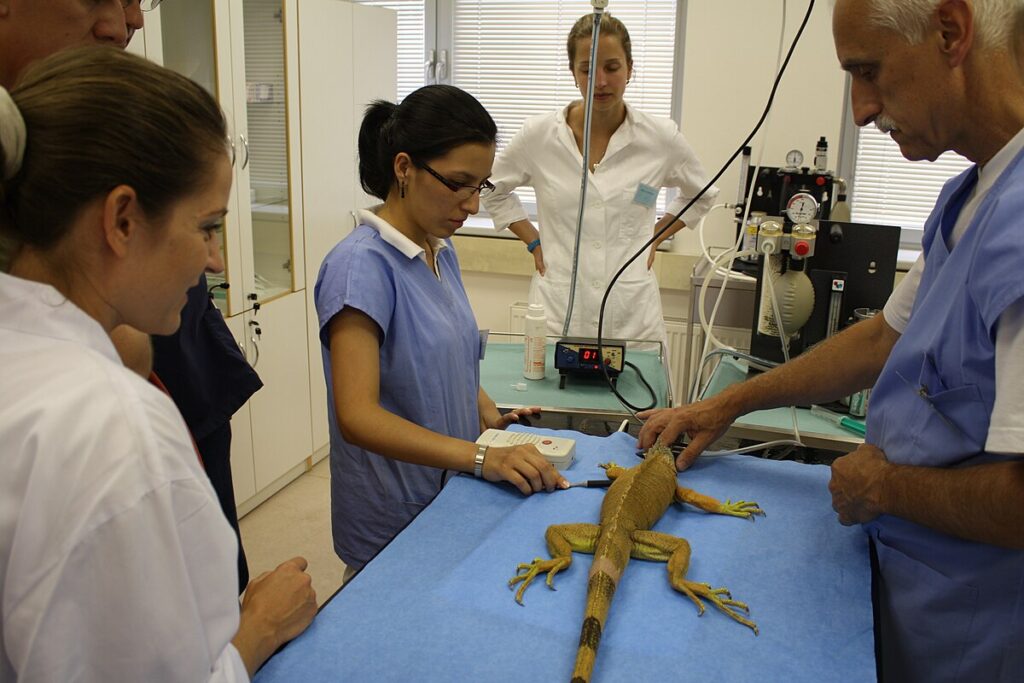
Iguanas are susceptible to several health conditions that directly result from improper care, with metabolic bone disease heading the list due to inadequate diet or UVB exposure. Respiratory infections frequently occur in environments with improper temperature gradients or excessive humidity, manifesting as wheezing, nasal discharge, or open-mouth breathing. Mouth rot (infectious stomatitis) presents as inflammation and infection of the oral tissues, often stemming from poor hygiene or traumatic injury. Parasitic infections, both internal and external, require regular veterinary screening and prompt treatment when detected. Egg binding in females represents a potentially life-threatening emergency requiring immediate veterinary intervention. Finding a qualified exotic veterinarian with specific reptile experience is essential before acquiring an iguana, as these specialized practitioners often have limited availability in many regions, and treatment costs can quickly reach hundreds or even thousands of dollars for serious conditions.
Breeding Considerations: Not for the Faint of Heart

Breeding iguanas introduces a host of additional challenges that even experienced keepers should approach with caution. Females can produce 20-70 eggs per clutch, creating an immediate ethical concern regarding the placement of offspring into qualified homes, particularly considering the specialized care requirements and limited adoption opportunities for unwanted iguanas. The breeding process itself carries significant health risks for females, including egg binding, calcium depletion, and exhaustion. Males often become exceptionally aggressive during breeding season, sometimes to the point where they cannot be safely handled without specialized equipment. The incubation process requires precise temperature and humidity control over approximately 90-120 days, followed by intensive care for hatchlings, which are vulnerable to dehydration, nutritional deficiencies, and stress-related illnesses. Given these challenges and the already overwhelming population of unwanted adult iguanas, breeding should generally be left to dedicated conservation programs and specialized breeders with appropriate resources and placement networks.
Legal Considerations: Check Before You Buy

The legal status of iguana ownership varies significantly across different jurisdictions, making research into local regulations essential before acquisition. Several states, including Hawaii, have outright bans on iguana ownership due to concerns about escaped pets establishing invasive populations in suitable climates. Other locations require special permits, registration, or have size restrictions that may limit an owner’s ability to legally keep an adult iguana. Florida has experienced particularly severe ecological impacts from released iguanas, leading to increasingly stringent regulations and a classification of iguanas as invasive species that can be humanely killed without special permits on private property. Even in areas where iguanas remain legal pets, many rental properties and homeowners associations prohibit reptiles, potentially creating housing difficulties for owners. International regulations, particularly CITES (Convention on International Trade in Endangered Species), may restrict transportation of iguanas across national borders, complicating international moves for iguana owners.
The Abandoned Iguana Crisis: A Growing Problem
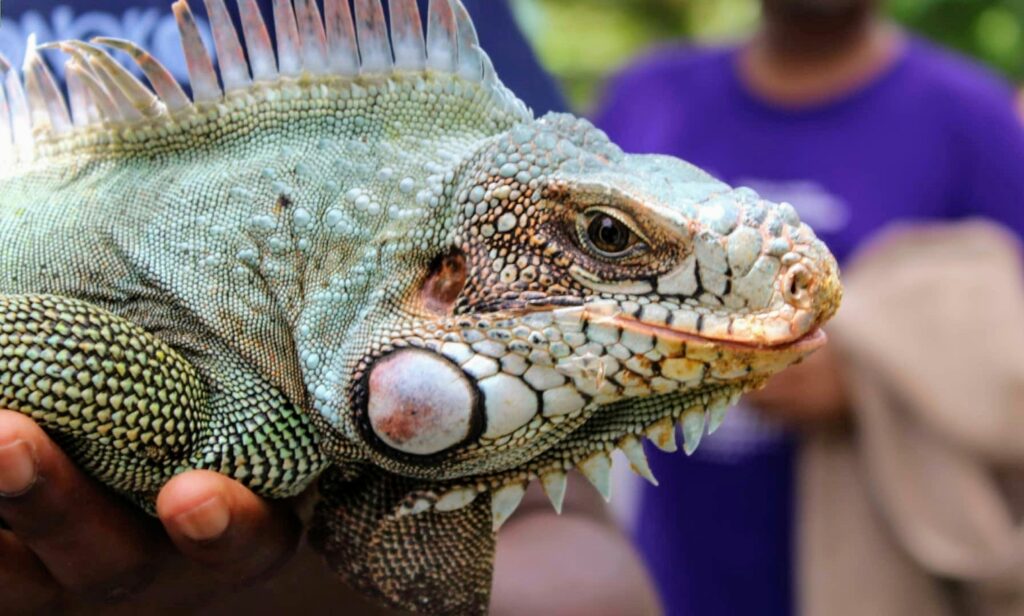
The specialized care requirements and long lifespan of iguanas have contributed to a significant abandonment crisis, with reptile rescues across North America reporting overwhelming numbers of surrendered or abandoned iguanas. Many new owners purchase cute, manageable juvenile iguanas without fully understanding their future size and care requirements, leading to surrender when the animals outgrow their enclosures or develop behavioral issues. Reptile rescues frequently operate at capacity with waiting lists for iguana surrenders, forcing some owners to resort to inappropriate release into the wild—a practice that typically results in the slow death of the animal in unsuitable climates or, in tropical regions, contributes to destructive invasive populations. The financial burden of properly caring for an iguana over its lifetime can exceed $10,000 when accounting for appropriate housing, specialized equipment, quality diet, and veterinary care, creating economic pressures that further contribute to the abandonment problem. These realities make adoption from reptile rescues both an ethical alternative to purchasing juveniles and an opportunity to provide a second chance to animals in need.
Responsible Ownership: Setting Realistic Expectations
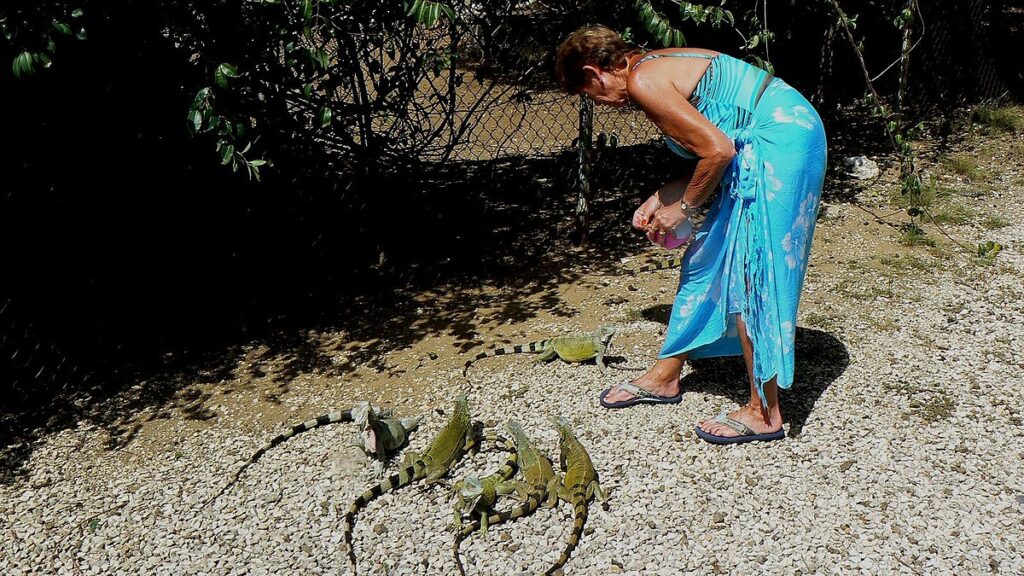
Responsible iguana ownership begins with thorough research and honest self-assessment regarding one’s ability to meet an iguana’s needs for potentially two decades or more. Prospective owners should spend time with adult iguanas at rescues or experienced keepers’ homes to understand their true size, housing requirements, and temperament before committing to the species. Financial planning must account for significant initial setup costs (often $1,000 or more for appropriate adult housing), ongoing expenses for fresh food and replacement equipment, and emergency veterinary funds. Space considerations extend beyond just the enclosure, as food preparation for an iguana’s specialized diet requires dedicated refrigerator space and regular food processing. The time commitment involves daily feeding, regular enclosure cleaning, health monitoring, environmental maintenance, and socialization sessions—responsibilities that cannot be easily delegated during vacations or personal emergencies. These combined factors make iguanas suitable only for the most dedicated reptile enthusiasts with stable living situations and long-term commitment capacity.
Alternatives: Similar Reptiles with Easier Care Requirements
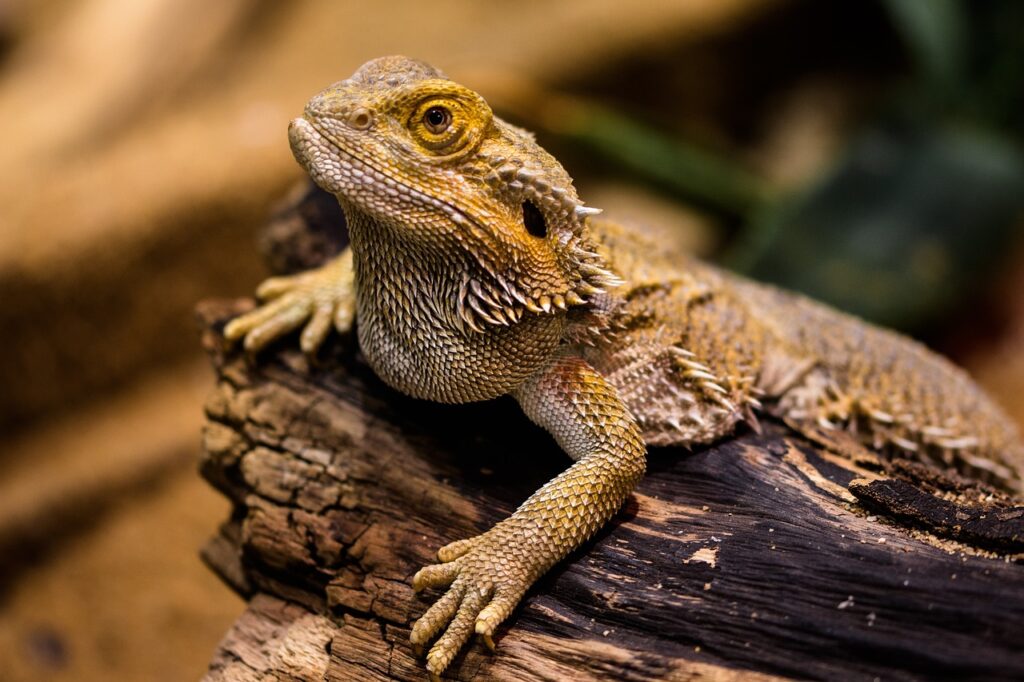
For those drawn to iguanas but hesitant about their intensive care requirements, several alternative reptile species offer similar appeal with more manageable needs. Bearded dragons provide interactive personalities and striking appearance at a fraction of the size (typically 18-24 inches), with more omnivorous diets that simplify feeding routines. Uromastyx lizards offer vibrant coloration and herbivorous diets without the extreme size and humidity requirements of iguanas. Blue-tongued skinks combine docile temperaments with moderate size (18-24 inches) and omnivorous feeding habits that accommodate a wider variety of food items. Chinese water dragons provide the arboreal lifestyle and impressive appearance of iguanas at roughly half the size, though they still require substantial enclosures and humidity control. Even among these alternatives, however, proper research remains essential, as all reptiles have specific care requirements that must be met to ensure their health and longevity. The time invested in finding the right species match for one’s lifestyle and capabilities pays dividends in a more successful and rewarding reptile keeping experience.
Iguanas represent a fascinating pinnacle of reptile evolution, with their impressive size, striking appearance, and complex behaviors making them understandably appealing to enthusiasts. However, their specialized care requirements—including enormous space needs, strict dietary guidelines, environmental controls, and potential behavioral challenges—place them firmly in the category of advanced reptile keeping. Potential owners must approach iguana acquisition with eyes wide open to the decades-long commitment they represent, both financially and in terms of care requirements. For those with the dedication, resources, and stability to properly meet an iguana’s needs throughout its long life, these remarkable reptiles can provide a uniquely rewarding companion animal experience. For most reptile enthusiasts, however, the responsible choice may be to admire these magnificent creatures from a distance while selecting more manageable species better suited to their particular circumstances.

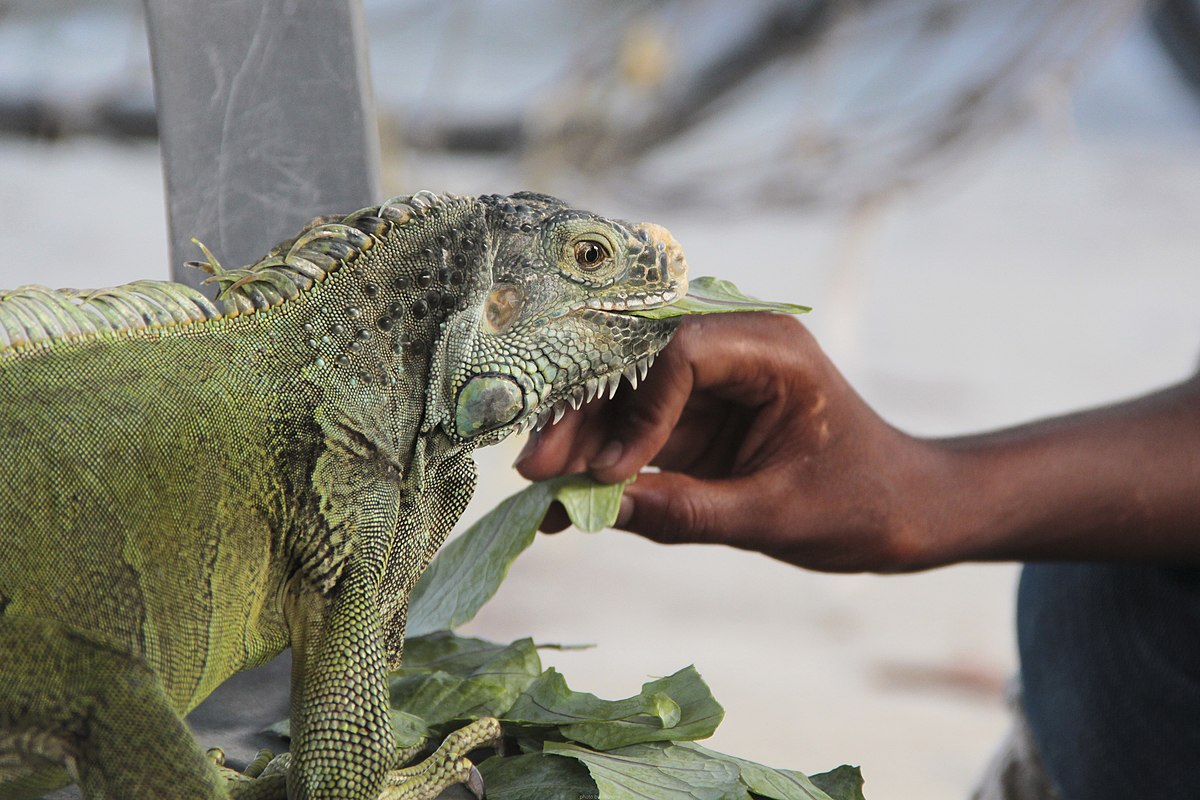
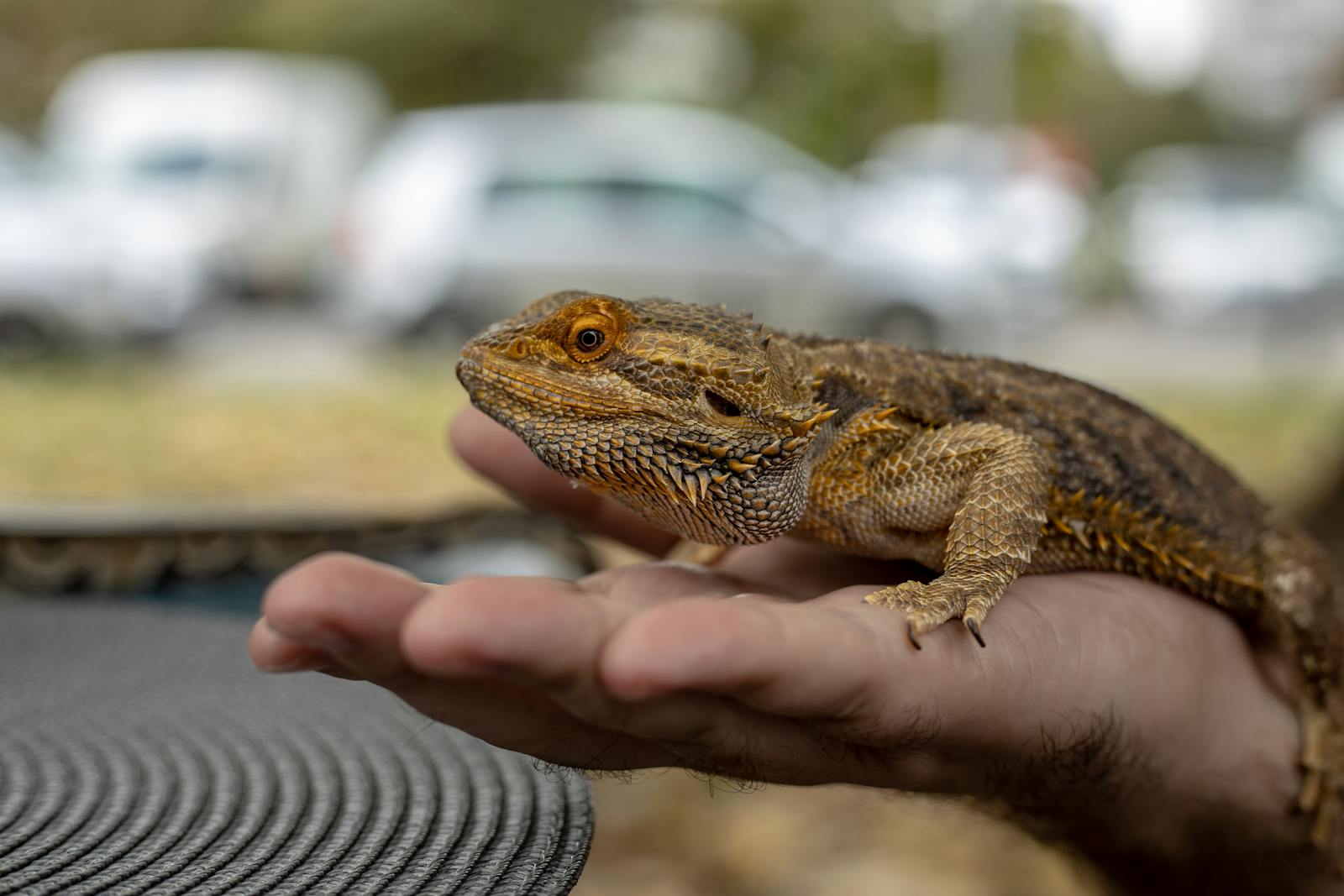

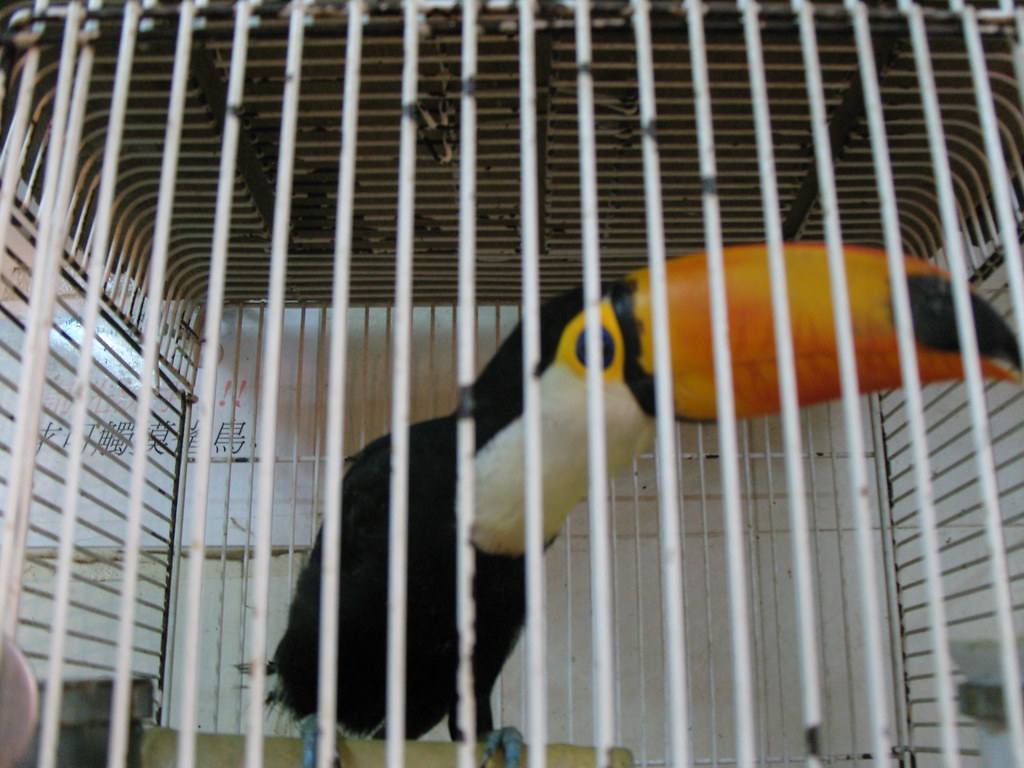
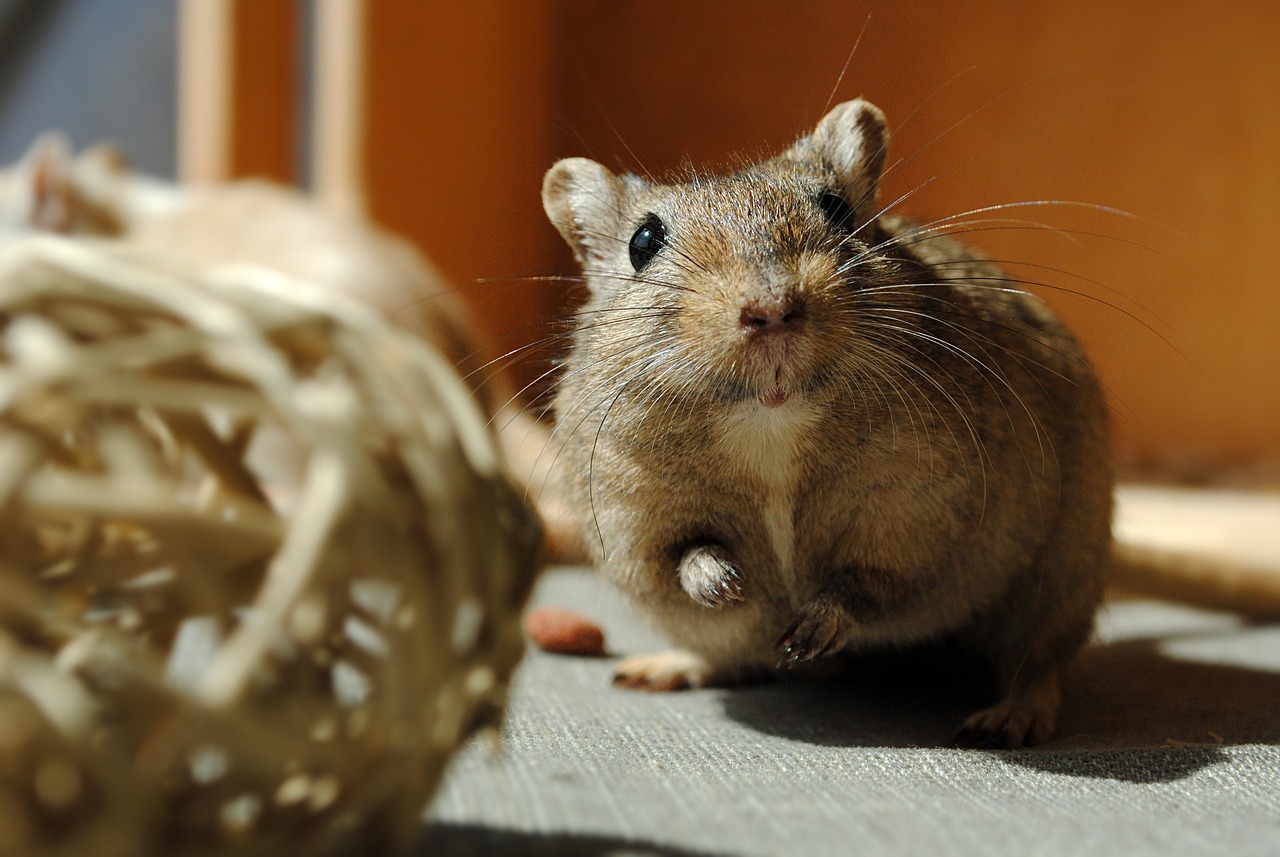
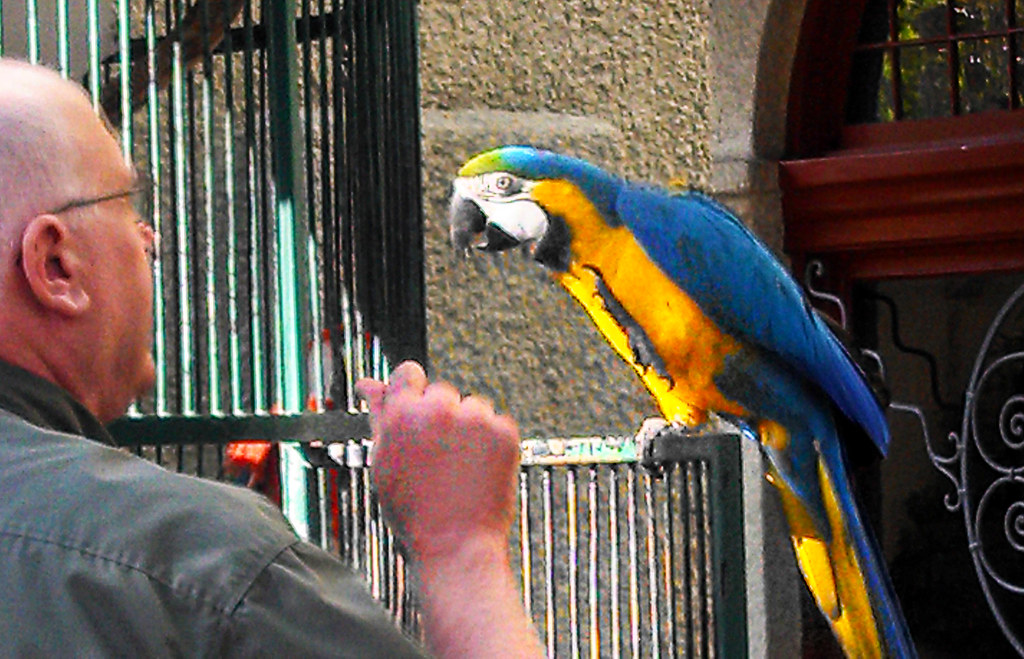
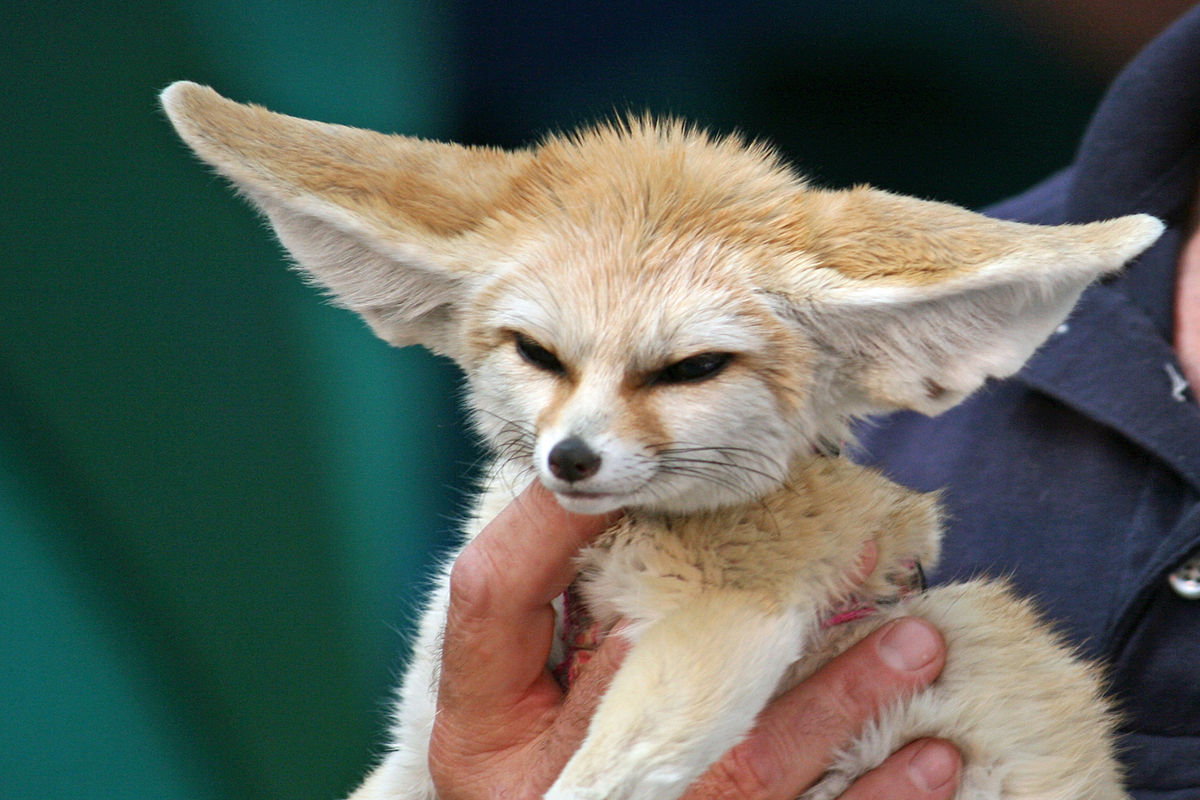
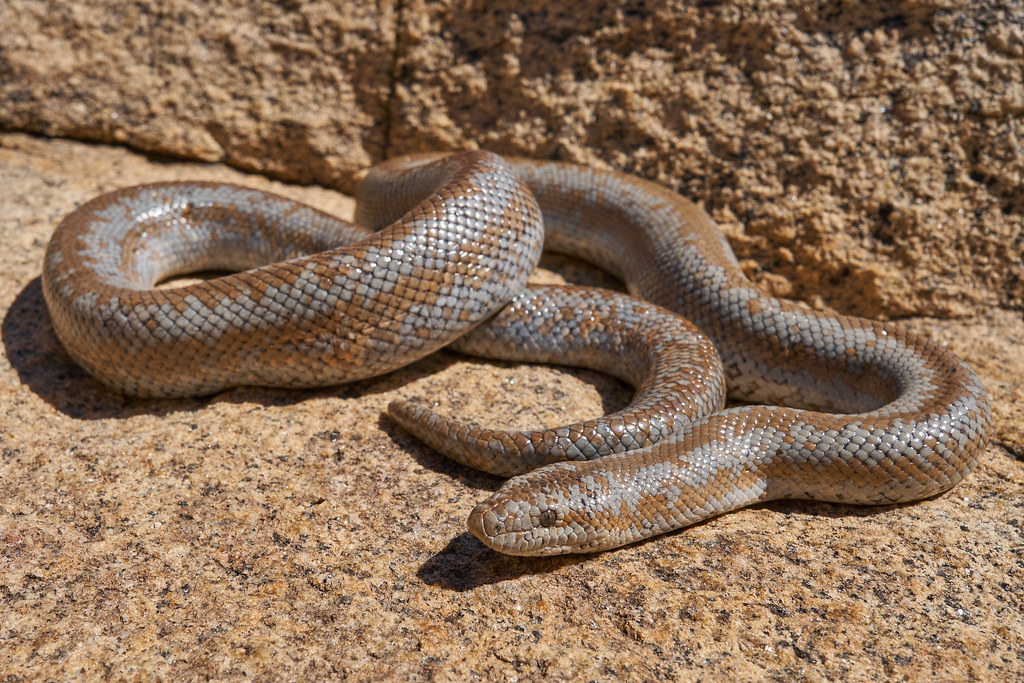
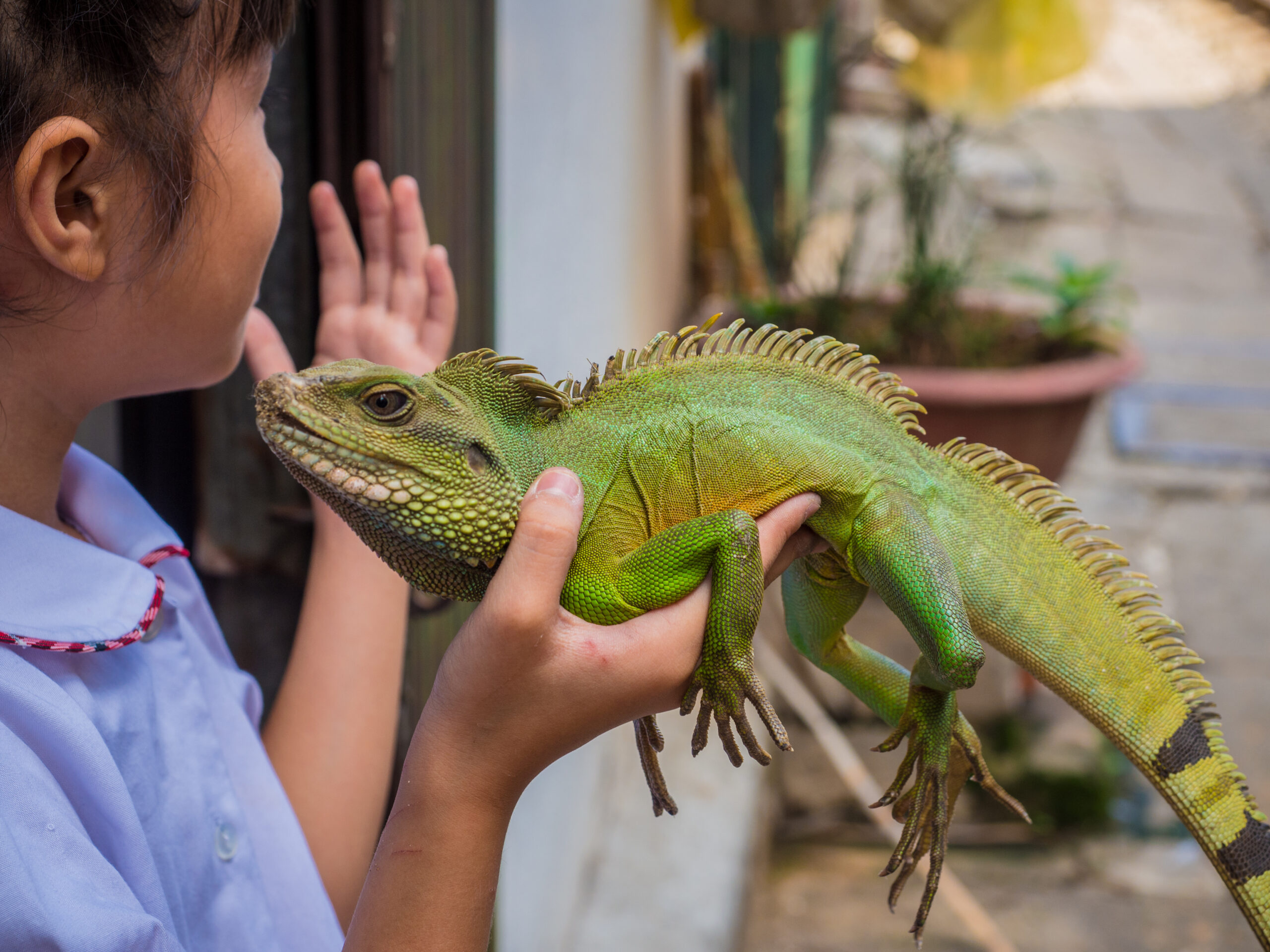

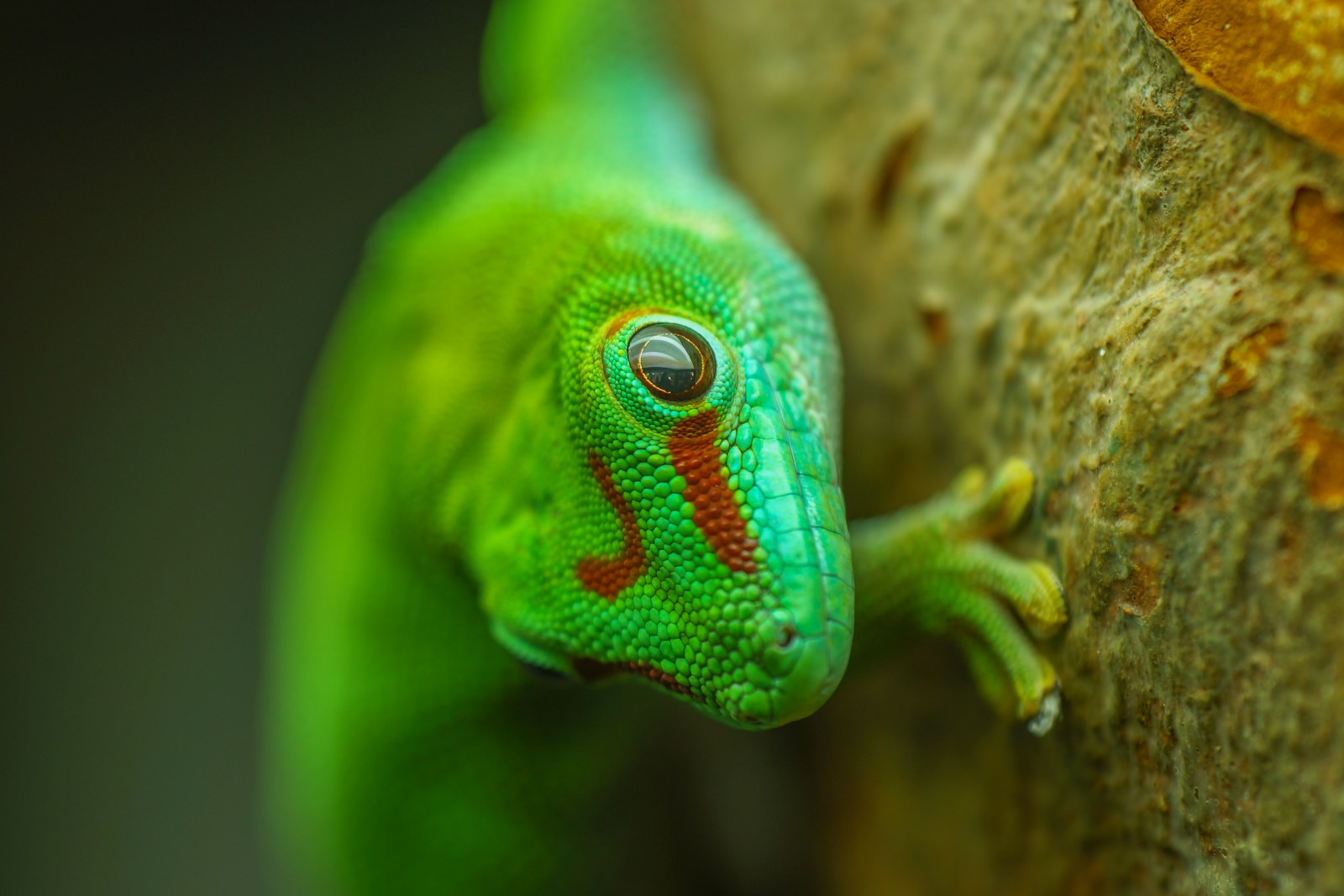




Leave a Reply